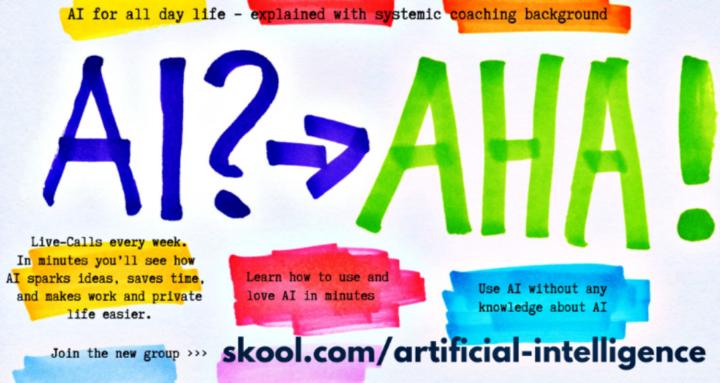Human-in-the-Loop Training
Human-in-the-Loop Training
Human-in-the-Loop training integrates human feedback directly into machine learning pipelines, combining human intelligence with computational power to improve model performance and alignment. The engineering challenge involves designing efficient annotation interfaces, managing labeling costs and quality, orchestrating human-AI collaboration workflows, handling subjective human judgments, and scaling human involvement while maintaining consistency and reducing bottleneck effects.
Human-in-the-Loop Training Explained for Beginners
- Human-in-the-Loop training is like teaching a student driver with an instructor present - the AI attempts tasks while humans provide corrections, guidance, and take control when needed. Just as driving instructors intervene to prevent mistakes and demonstrate proper technique, humans in the loop correct AI errors, provide examples for difficult cases, and ensure the system learns safe, appropriate behaviors that pure data alone cannot teach.
What Defines Human-in-the-Loop Systems?
HITL systems strategically incorporate human judgment at critical points in machine learning pipelines. Human roles: annotating data, correcting predictions, providing feedback, defining objectives. Collaboration paradigm: humans and AI working together leveraging respective strengths. Active learning: AI requests human input for most informative examples. Interactive training: real-time human feedback during model learning. Quality assurance: humans validating AI outputs before deployment. Continuous improvement: ongoing human input refining deployed models.
How Does Active Learning Reduce Labeling?
Active learning selectively queries humans for labels on most informative examples maximizing learning efficiency. Uncertainty sampling: requesting labels for examples with highest model uncertainty. Query by committee: labeling examples where ensemble models disagree. Expected error reduction: choosing examples minimizing future prediction errors. Diversity sampling: selecting representative examples covering input space. Budget constraints: optimizing queries within annotation cost limits. Performance: achieving target accuracy with 10-50% fewer labels typically.
What Are Interactive Machine Learning Methods?
Interactive ML enables real-time human feedback during training creating tight human-AI collaboration loops. Incremental learning: updating models immediately with human corrections. Explanation interfaces: showing model reasoning for human understanding. Counterfactual feedback: humans modifying inputs to demonstrate boundaries. Feature relevance: humans indicating important/irrelevant features. Mixed-initiative: AI and humans taking turns leading interaction. Rapid prototyping: quickly iterating models based on human insights.
How Does Reinforcement Learning from Human Feedback Work?
RLHF trains models using human preferences rather than explicit labels, crucial for subjective tasks. Preference collection: humans comparing outputs indicating better option. Reward modeling: learning reward function from human preferences. Policy optimization: training model to maximize learned reward. Iterative refinement: collecting new preferences on updated model. Constitutional AI: encoding human values into training process. Applications: chatbots, content generation, recommendation systems.
What Quality Control Methods Exist?
Ensuring high-quality human input requires systematic quality control mechanisms. Gold standard questions: known answers checking annotator accuracy. Inter-annotator agreement: multiple humans labeling same examples. Qualification tests: screening annotators before participation. Consensus mechanisms: aggregating multiple annotations intelligently. Performance monitoring: tracking annotator quality over time. Feedback loops: providing annotators performance information.
How Do Crowd-Sourcing Platforms Work?
Crowd-sourcing enables scalable human input through distributed online workers. Platform options: Amazon Mechanical Turk, Labelbox, Scale AI. Task design: creating clear, atomic tasks for workers. Pricing strategies: balancing cost with quality incentives. Worker management: recruiting, training, retaining good annotators. Quality mechanisms: redundancy, validation, reputation systems. Geographic distribution: leveraging global workforce, considering biases.
What Are Expert-in-the-Loop Systems?
Expert involvement provides specialized knowledge for complex domains requiring deep expertise. Domain specialists: doctors for medical AI, lawyers for legal systems. Knowledge elicitation: extracting expert mental models and rules. Collaborative annotation: experts working with AI assistance. Edge case handling: experts resolving difficult examples. Model validation: experts assessing system readiness. Knowledge transfer: experts training non-expert annotators.
How Do Human-AI Collaboration Patterns Work?
Different collaboration patterns suit different tasks and objectives. Human verification: AI proposes, human approves/rejects. Human correction: AI attempts, human fixes errors. Human demonstration: human shows correct behavior, AI learns. Co-creation: human and AI jointly producing outputs. Delegation: dynamically assigning subtasks to human or AI. Negotiation: human and AI reaching consensus through interaction.
What Are Annotation Interface Designs?
Effective interfaces critically impact annotation quality and efficiency. Task clarity: unambiguous instructions with examples. Efficient workflows: minimizing clicks, keyboard shortcuts. Visual aids: highlighting relevant information, comparison tools. Progress tracking: showing completion status, maintaining motivation. Feedback integration: showing annotation impact on model. Ergonomic design: preventing fatigue during extended sessions.
How Do You Scale Human Involvement?
Scaling HITL requires balancing human input value with computational efficiency. Hierarchical annotation: experts train crowd workers who label data. Semi-automated pipelines: AI handling easy cases, humans difficult ones. Transfer learning: leveraging annotations across related tasks. Weak supervision: using noisy labels from multiple sources. Self-training: using model predictions as pseudo-labels. Curriculum learning: gradually reducing human involvement.
What are typical use cases of HITL Training?
- Medical image diagnosis systems
- Content moderation platforms
- Autonomous vehicle training
- Legal document review
- Customer service chatbots
- Translation quality improvement
- Fraud detection systems
- Resume screening tools
- Product categorization
- Speech recognition training
What industries profit most from HITL Training?
- Healthcare for diagnostic AI
- Social media for content moderation
- Financial services for fraud detection
- Legal tech for document review
- E-commerce for product classification
- Automotive for autonomous driving
- Customer service for chatbot training
- HR tech for recruitment
- Government for document processing
- Education for personalized learning
Related Human-Centered AI Topics
- Active Learning
- Preference Learning
- Crowdsourcing Methods
- Interactive Machine Learning
- Explainable AI
Internal Reference
---
Are you interested in applying this for your corporation?
Ask for apply to https://www.skool.com/artificialintelligence/about
0
0 comments

skool.com/artificial-intelligence
Artificial Intelligence (AI): Machine Learning, Deep Learning, Natural Language Processing NLP, Computer Vision, ANI, AGI, ASI, Human in the loop, SEO
Powered by



